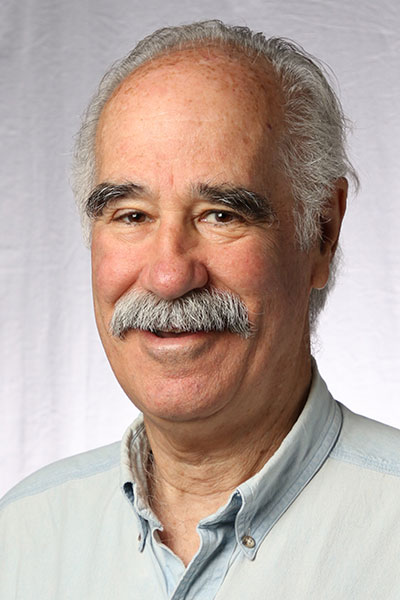Forty years after publication in 1993, the initial paper on the results of the Diabetes Control and Complications Trial (DCCT) remains the single most cited publication in the diabetes literature, followed closely by the observational Epidemiology of Diabetes Interventions and Complications (EDIC) study.

Nathan, MD
David M. Nathan, MD, Chair of the DCCT/EDIC Research Group and Director of the Clinical Research Center and of the Diabetes Center at Massachusetts General Hospital and Professor of Medicine at Harvard Medical School, and other investigators expounded on the two studies and their transformational influence on people living with diabetes in The Ongoing Impact of the DCCT/EDIC Study at 40 Years.
Before DCCT/EDIC, most individuals with type 1 diabetes died in their late 40s, 31% were blind, 22% had renal failure, 10% had a stroke, 12% had an amputation, and 21% had a myocardial infarction. In 2023, the DCCT/EDCT cohort mimics the general population in retinopathy, kidney disease, cardiovascular disease, and mortality.
“DCCT set out to explore the glucose hypothesis—treatment that normalized glucose levels would prevent or delay the long-term complications of diabetes,” Dr. Nathan said. “DCCT demonstrated a smooth continuum of increasing A1C and increasing complications. Glycemia, without question, drives microvascular complications.”
The session can be viewed on-demand by registered meeting participants at ADA2023.org. If you haven’t registered for the 83rd Scientific Sessions, register today to access the valuable meeting content through August 28.
When DCCT launched in 1983, treatment for type 1 diabetes was one or two daily insulin injections with urine monitoring. Treatment goals were no symptoms of hyper- or hypoglycemia and A1C less than 15%.
Intensive treatment was three or fewer daily injections or insulin pump with four or fewer self-monitored blood glucose tests. Treatment goals were pre-meal blood glucose of 70-120 mg/dL, post-meal blood glucose of less than 180 mg/dL, and A1C less than 6.05%.
“We didn’t get the intensive cohort to 6.05% A1C on average, although some individuals got there,” Dr. Nathan said. “But we were able to separate glucose levels between the conventional care and intensive arms by 2%, which showed a 76% reduction in retinopathy for primary prevention and a 54% reduction for secondary prevention. There were similar reductions for nephropathy and neuropathy.”
The success of DCCT in preventing short-term complications spurred the funding of EDIC to assess the longer-term effects of intensive glucose management. Participants in the conventional care arm were taught intensive control, and all participants returned to the care of their primary care providers.
Over time, the cumulative A1C of the two original arms converged to about 7.3%, but the effect of early glycemic reduction, dubbed metabolic memory, persisted.

MD, PhD
While individuals from both arms showed reductions in retinopathy, kidney disease, and neuropathy at EDIC year four, those in the intensive arm showed a greater reduction, noted Rose Gubitosi-Klug, MD, PhD, Principal Investigator, DCCT/EDIC Clinical Coordinating Center, and Chief of Pediatric Endocrinology, Diabetes and Metabolism, University Hospitals Rainbow Babies and Children’s Hospital, and Professor of Medicine, Case Western Reserve University.
Increased A1C emerged as a leading risk factor for retinopathy, kidney disease, and neuropathy. Regular assessments of the DCCT/EDIC cohort showed that many were being over tested. A new evidence-based screening strategy for diabetic retinopathy recommended an individualized approach based on prior screening results and adjusted for A1C. Individuals with no evidence of diabetic retinopathy were screened every four years, while those with severe disease were screened every three months.
DCCT/EDIC has also improved understanding of the role glycemia, as measured by A1C, plays in cardiovascular disease (CVD). EDIC captured carotid artery intima-media thickness (IMT), coronary artery calcification (CAC), cardiac structure and function by MRI, and clinical CVD events at multiple time points.

“Common carotid artery IMT increased over time, with significantly higher levels in participants from the original conventional treatment group compared to the intensive group,” said Ionut Bebu, PhD, Co-Principal Investigator, Data Coordinating Center, and Associate Research Professor of Biostatistics and Bioinformatics at The George Washington University Milken Institute of Public Health. “By EDIC year eight, we could see a 50% reduction in the odds of CAC in the intensive therapy primary prevention cohort.”
As CAC levels increased, so did the risk of a coronary artery disease (CAD) event, explained Dr. Bebu. Participants with a CAC score greater than 100 had a fourfold higher risk of any CVD and more than five times the risk for any major cardiovascular event. A1C emerged as the strongest modifiable risk factor.
Of the original DCCT cohort of 1,441 participants, 1,075 remain in the study. The mean age at entry was 27; the mean age today is 63.

RN, CDCES
“We have a unique opportunity to explore cognition, hearing, and other outcomes of aging and diabetes over decades that we could not have imagined 40 years ago,” said Gayle Lorenzi, RN, CDCES, Co-Chair, Coordinators Committee, and Community Health Project Manager, University of California San Diego. “As A1C increased, so did impairments. For every 10% increase in mean A1C, we see a 32% impairment in speech-frequency hearing and 19% impairment for high-frequency hearing compared to controls.”
The magnitude of cognitive decline is accelerated with increasing age and is associated with micro- and macrovascular complications. Additionally, increasing A1C and systolic blood pressure (SBP), plus one or more episodes of severe hypoglycemia, is equal to an additional 9.4 years of aging, Ms. Lorenzi said.

Changes in physical functioning followed a similar pattern, added Catherine Martin, MS, RN, BCADM, CDCES, Co-Chair, Coordinators Committee, and Adjunct Clinical Instructor, University of Michigan School of Nursing. Two-thirds of DCCT/EDIC participants had cheiroarthropathy, conditions characterized by thickened skin and limited joint mobility, pain, and functional impairment in 2012. Increasing age, longer diabetes duration, and worse glycemic control are risk factors, along with female sex and co-occurrence of neuropathy and retinopathy.
“Higher A1C was an independent risk factor for increased bone resorption and formation, and lower estimated glomerular filtration rate (eGFR) was an independent risk factor for increased bone resorption and formation,” Ms. Martin said. “Good glycemia and preventing kidney disease could impact excessive bone turnover and may modify the fracture risk associated with type 1 diabetes.”
Compared with controls without diabetes, EDIC participants had three times the frequency of decreased scores on the Short Physical Battery, which is associated with falls, frailty, and mortality. Each 1% increase in A1C increased the risk of physical limitations 2.77-fold.

“We need to incorporate assessment of age-related health concerns in the care of people with type 1 diabetes, and perhaps at younger ages than in adults without diabetes,” Ms. Martin said. “Long-term glycemia is a cross-cutting risk factor for hearing, cognition, musculoskeletal measures, and physical function, reinforcing the importance of early and sustained glucose control.”
The current EDIC 2022-2027 cycle will build on the extensive phenotyping and genotyping over more than 60% of participants’ total lifespan and more than 80% of their diabetes duration to better understand the clinical course of type 1 diabetes in the setting of advancing diabetes duration, age, and adiposity in the current era of intensive therapy, said Barbara H. Braffett, PhD, Co-Principal Investigator, Data Coordinating Center, and Associate Research Professor of Epidemiology, The George Washington University Milken Institute School of Public Health.

MD, MPH
“The cohort is reaching the age where important comorbidities are likely to occur even in the absence of diabetes,” explained Dr. Braffett.
New measures to be introduced include cardiopulmonary exercise testing, two-dimensional Doppler echocardiography, and carotid-femoral pulse wave velocity. Given the increasing adiposity of the cohort, factors contributing to fatty liver disease and obstructive sleep apnea are also being introduced.

MD, PhD
“The findings of DCCT/EDIC have had huge impacts on diabetes care, education, screening, and research,” said Bruce A. Perkins, MD, MPH, Professor of Medicine and Principal Investigator, University of Toronto Center, Toronto, Canada. “When DCCT launched in 1983, people feared diabetes complications. They were coached that they were likely to die by their late 40s. We now know that does not have to happen.”
Glycemic control at any stage can help improve outcomes, but early glycemic management is best, he noted.
“DCCT changed the standard of care for diabetes,” added Rodica Pop-Busui, MD, PhD, Professor of Medicine and Co-Investigator, University of Michigan Center and ADA President for Medicine and Science “The DCCT/EDIC findings stimulated a domino effect, an explosion of new insulins and pumps, new discoveries, new products, new discoveries. We cannot emphasize enough that an early focus on target glycemic control is necessary even in adolescents and young adults to reduce excess CVD and mortality.”